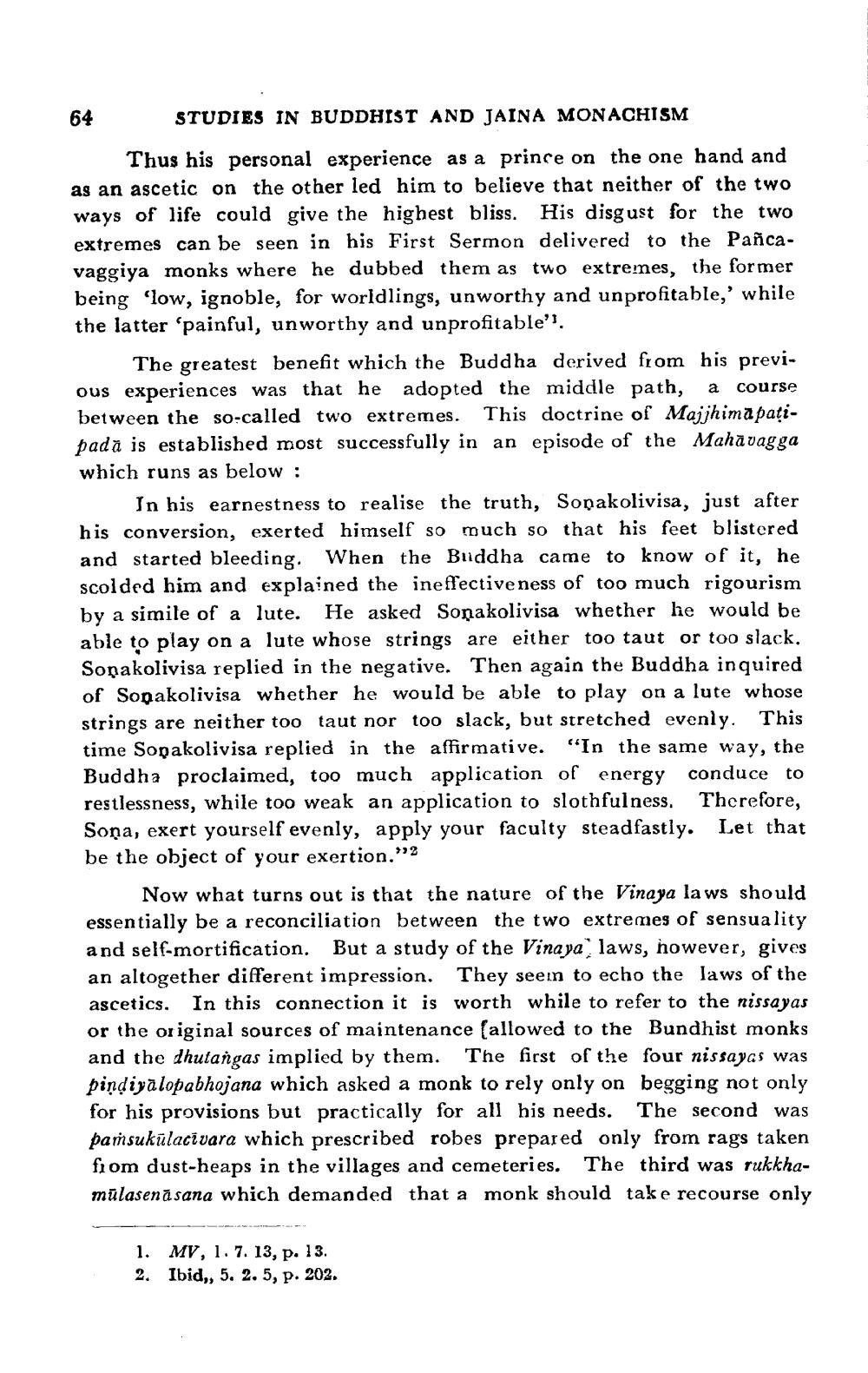________________
64
STUDIES IN BUDDHIST AND JAINA MONACHISM
Thus his personal experience as a prince on the one hand and as an ascetic on the other led him to believe that neither of the two ways of life could give the highest bliss. His disgust for the two extremes can be seen in his First Sermon delivered to the Pañcavaggiya monks where he dubbed them as two extremes, the former being 'low, ignoble, for worldlings, unworthy and unprofitable,' while the latter ‘painful, unworthy and unprofitable').
The greatest benefit which the Buddha derived from his previous experiences was that he adopted the middle path, a course between the so-called two extremes. This doctrine of Majjhimā pațipadă is established most successfully in an episode of the Mahāvagga which runs as below:
In his earnestness to realise the truth, Sonakolivisa, just after his conversion, exerted himself so much so that his feet blistered and started bleeding. When the Buddha came to know of it, he scolded him and explained the ineffectiveness of too much rigourism by a simile of a lute. He asked Sonakolivisa whether he would be able to play on a lute whose strings are either too taut or too slack. Sonakolivisa replied in the negative. Then again the Buddha inquired of Sopakolivisa whether he would be able to play on a lute whose strings are neither too taut nor too slack, but stretched evenly. This time Sopakolivisa replied in the affirmative. “In the same way, the Buddha proclaimed, too much application of energy conduce to restlessness, while too weak an application to slothfulness. Therefore, Sona, exert yourself evenly, apply your faculty steadfastly. Let that be the object of your exertion."2
Now what turns out is that the nature of the Vinaya laws should essentially be a reconciliation between the two extremes of sensuality and self-mortification. But a study of the Vinaya laws, however, gives an altogether different impression. They seemn to echo the laws of the ascetics. In this connection it is worth while to refer to the nissayas or the original sources of maintenance (allowed to the Bundhist monks and the dhutangas implied by them. The first of the four nissayas was pindiyalopabhojana which asked a monk to rely only on begging not only for his provisions but practically for all his needs. The second was pańsukūlacīvara which prescribed robes prepared only from rags taken from dust-heaps in the villages and cemeteries. The third was rukkhamūlasena sana which demanded that a monk should take recourse only
1. MV, 1. 7. 13, p. 13. 2. Ibid,, 5. 2.5, p. 202.




